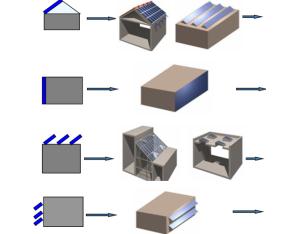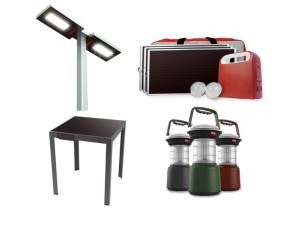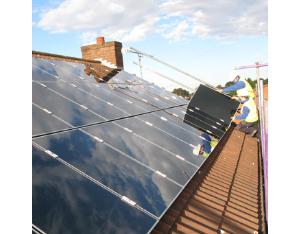BIPV (Building Integrated Photovoltaics)
- Product Details
- Company Profile
The increasing demands for a comfortable environment have caused larger energy consumption from heating and air conditioning of the buildings and triggered a public call for carbon reduction. Through integrating solar power generation products to flat and slanted roof-tops, curtain walls and ceilings, BIPV can bring to you green office and residential buildings, help to reduce the carbon footprints, and produce benefits from solar power generation. In this way, your buildings will have greater social values and represent brand-new green ideas.
The increasing demands for a comfortable environment have caused larger energy consumption from heating and air conditioning of the buildings and triggered a public call for carbon reduction. Through integrating solar power generation products to flat and slanted roof-tops, curtain walls and ceilings, BIPV can bring to you green office and residential buildings, help to reduce the carbon footprints, and produce benefits from solar power generation. In this way, your buildings will have greater social values and represent brand-new green ideas.
Introduction to BIPV
BIPV refers to photovoltaic modules or materials integrated with buildings as an indispensable part of the building to both generate electricity and keep off the wind and rain and insulate heat. Buildings will be deprived of such functions if the modules are removed. BIPV distinguishes itself from BAPV or simple attaching photovoltaic modules or systems to buildings in that the former functions as an integral part of the buildings like building materials.
BIPV features a series of advantages such as stable electricity supply, space saving, building material saving, pro peak regulation, environment friendly and a small carbon footprint.
Application areas of BIPV
BIPV is applied in skylight roof-tops, transparent thin-film glass, PV-tiles rooftops, walls, and PV curtain walls.

Application of Hanergy’s thin-film PV cells-distributed power generation system
| Formats of BIPV | PV modules | Construction requirements | Type | |
| 1 | PV skylight Windows | PV glass modules | Architectural impacts, structural strength, day-lighting, shelter from the wind and rain | Integrated |
| 2 | PV rooftops | PV rooftop tiles | Architectural impacts, structural strength, and shelter from the wind and rain | Integrated |
| 3 | PV curtain walls | PV glass modules | Architectural impacts, structural strength, day-lighting, shelter from the wind and rain | Integrated |
| 4 | PV curtain walls | PV glass modules | Architectural impacts, structural strength, and shelter from the wind and rain | Integrated |
| 5 | PV sunshades | PV glass modules | Architectural impacts, structural strength, and day-lighting | Integrated |
| 6 | PV sunshades (Without a need for day-lighting) | PV glass modules | Architectural impacts and structural strength | Integrated |
| 7 | Roof-top PV arrays | General PV modules | Architectural impacts | Attached |
| 8 | Wall PV arrays | General PV modules | Architectural impacts | Attached |












 Free Member
Free Member 0
0 Chinese
Supplier
Chinese
Supplier
